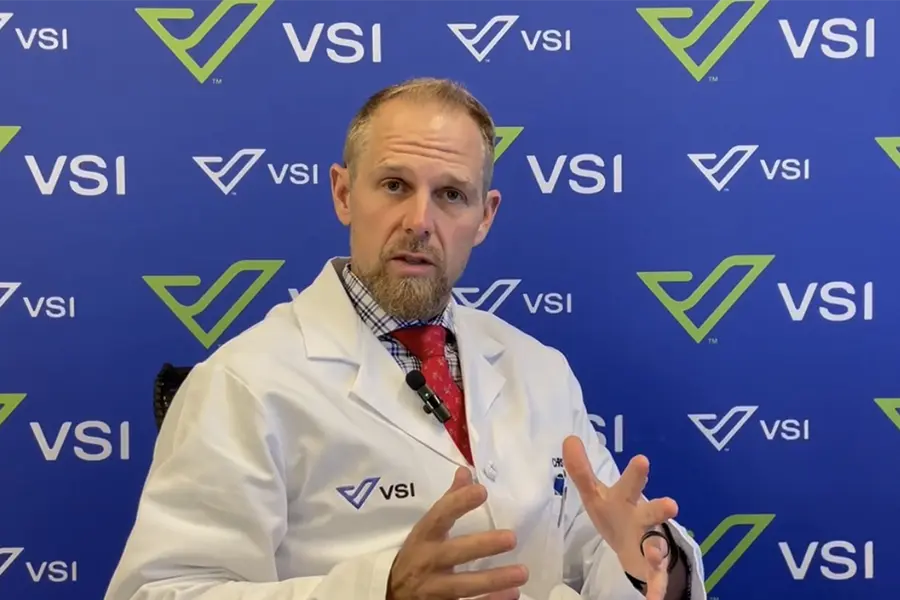
5 Keys to Spinal Fusion Success
Choosing to undergo spine surgery is a significant decision that can feel overwhelming. As a spine surgeon, I often get questions from patients and their families about how to ensure the best outcomes from spinal fusion surgery. To help simplify the process, I’ve outlined five key factors that can make a big difference in achieving a successful spine fusion.
Watch the Video on Youtube
1. Get the Right Diagnosis
The first and most critical step is ensuring you have the correct diagnosis. The spine is a complex structure with multiple components—bones, joints, discs, and nerves—any of which could be the source of pain. Misdiagnosis is one of the main reasons surgeries fail to deliver the desired results.
- Ask Questions: Confirm which area of the spine requires surgery and why. Review imaging with your surgeon to understand the decision-making process.
- Diagnostic Tools: Surgeons may use X-rays, MRIs, nerve tests, or targeted injections to pinpoint the problem area.
Tip: Think of it as “measure twice, cut once.” Take the time to get the right diagnosis upfront.
2. Choose the Safest Surgical Technique
Spine fusion involves welding two bones together, but the approach can vary widely. Surgeons can access the spine from the front, back, side, or a combination, using techniques that range from minimally invasive to more extensive procedures.
- Ask About Techniques: Understand the surgical approach your surgeon recommends and why.
- Consider Nerve Safety: Some techniques require moving nerves, which can lead to complications. Discuss how your surgeon plans to minimize risks.
Each method has trade-offs, so ensure the chosen approach aligns with your specific needs.
3. Understand Your Spine Surgeon’s Accuracy and Delicacy
Spine surgery demands precision. Placing implants or screws in the wrong position can lead to poor outcomes. Some surgeons use advanced technologies like robotics, augmented reality, and computer-assisted planning to enhance accuracy.
- Research Your Surgeon: Look for publications or patient reviews that highlight your surgeon’s track record.
- Assess Communication: A surgeon who takes time to explain the procedure and plan carefully is often meticulous in surgery as well.
Tip: A history of satisfied patients and successful outcomes is a strong indicator of a skilled surgeon.
4. Focus on Spinal Alignment
The spine is designed to move, so fusing two bones can alter its natural alignment. Poor alignment can accelerate degeneration in other parts of the spine, leading to long-term issues.
- Ask About Alignment: Ensure your surgeon is considering your overall spinal posture during the procedure.
- Technique Matters: Certain approaches, like anterior lumbar fusion, may be better for maintaining alignment in some cases.
Proper alignment is critical for reducing stress on the rest of the spine and ensuring lasting results.
5. Ensure Proper Spinal Fusion Healing
After surgery, it takes time for the bones to heal and fuse together. Incomplete fusion (pseudarthrosis) can lead to instability and complications.
- Implants and Bone Grafts: Ask your surgeon about the type of implants and bone graft materials being used to enhance fusion success.
- Follow Recovery Guidelines: Activities like bending, lifting, or twisting may need to be avoided during recovery to prevent complications.
Tip: Adhering to your surgeon’s post-operative instructions is just as critical as the surgery itself.
Spine fusion surgery is a complex process, but by focusing on these five keys—getting the right diagnosis, choosing the safest technique, understanding your surgeon’s precision, addressing spinal alignment, and ensuring proper healing—you can set yourself up for the best possible outcome.
Take the time to communicate with your surgeon and make informed decisions at every step. Spine surgery success isn’t just about the procedure—it’s about the planning, precision, and care that go into it.
Topics covered
About the Author
Featured Resources
Insights to Achieve a Pain-Free Life



